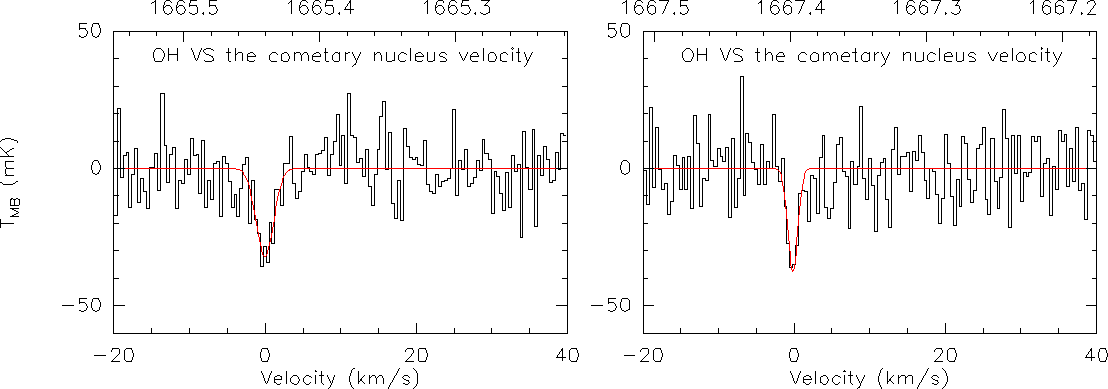A recent new research achievement on detection of the 1667/1665 MHz absorption lines in the volatilized gas of Comet C/2013 US10 using the 65m Tian Ma Radio Telescope was published in The Astronomical Journal (2017, AJ, 154,249) by Dr. Zhen Wang from the Galaxies and cosmology research group at XAO.
Containing abundant oldest relics of solar nebula cloud, the new comet C/2013 US10 (Catalina) in the Oort cloud is about 100,000 astronomical units away from the Sun moving in a hyperbolic orbit with the orbital eccentricity slightly more than one. Under the effect of solar ultraviolet radiation, kinematic property of the energy transfer and photochemical processes, the surface frozen substances of the comet is evaporated into gaseous species, with the H2O of the comet subsequently photo-dissociated into atom H and molecule OH forming the H and OH cloud. The above processes cause the energy to increase, produces heat and inflation of neutral gas, which cause the brightness of the comet to reach 4.7. On 3-5 December 2015, we completed a 14-hour observation on this comet with frequency resolution of 0.3 KHz. We detected 1667/1665 MHz absorption lines, and the associated flux density, and water production rate. The observational data has provided an important basis for studying the oldest relics in the solar system and is significant for understanding the solar system and planetary origin and evolution.
This work was supported by the National Nature Science Foundation of China and the Chinese Academy of Sciences Foundation of the young scholars of western.
Article Link:https://doi.org/10.3847/1538-3881/aa97db

Fig.1 OH absorption line 1667/1665 MHz of C/2013 US10

